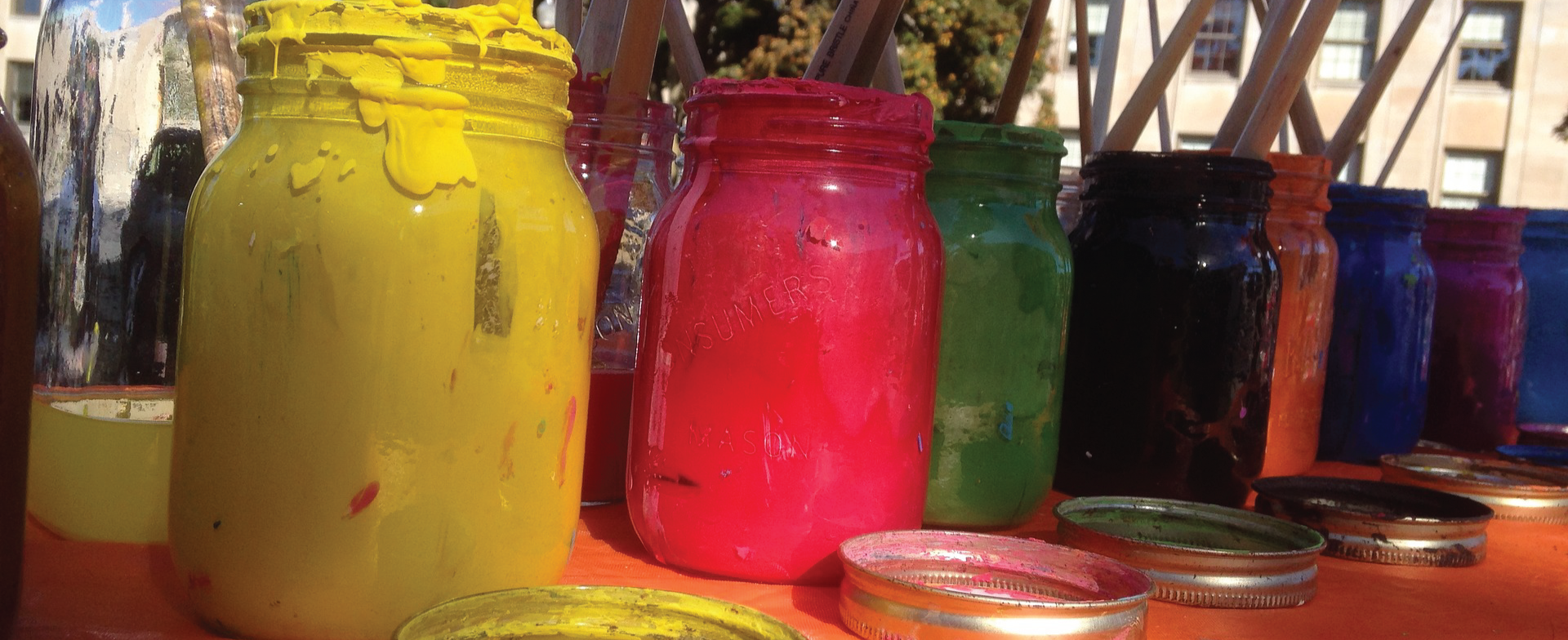In Quebec, “national moving day” is often followed by long days of painting. But many people are so eager to settle into their new home that they rush through the process. Don’t make the same mistake! Always take the time to properly prepare your workspace and make sure you have the right tools, all while respecting Mother Nature!
Preparation is crucial when it comes to painting. Unless you’re a big fan of abstract art, spilling a gallon of paint onto the carpet or ruining a table with splashes could be pretty frustrating. To avoid having to explain that you’re changing to a career in the arts or having to buy new furniture, start by emptying the room out as much as possible, or gather all of your belongings in the centre of it. Whether or not the room is entirely empty once you start painting, cover the floors with a drop cloth, or even old sheets. Everything on the walls should also be taken down—paintings, frames, shelves, screws, door handles—so they don’t get in your way or get damaged.
Not too little, not too much
It’s hard to imagine anything more discouraging than running out of paint in the middle of your project, or having wasted money on useless extra gallons! So before buying your paint, take the time to calculate how much you will need.
Start out by calculating the surface area that will need to be painted. Keep in mind that you will need to apply two coats to get the desired effect, so double that number to get the required amount of paint. Also, you will need to apply at least one base coat. This will help the paint adhere to the wall and will save you many extra coats of paint. The pots are usually labelled with the volume of paint they contain, but if you aren’t sure what the dimensions of your apartment are or just want a second opinion, don’t hesitate to ask an in-store specialist.
Do not make the mistake of applying too much paint to your paintbrushes! Avoiding this common error will save you paint and prevent messy drips.
Think of the material, without being superficial!
Purchase quality materials. Try to ignore the seemingly over-the-top price tag; the best materials will prevent any number of inconveniences. In fact, cheap tools or those that not made for painting large surfaces will only make the task harder and may end up costing you more money in the end. Proper materials will help you avoid all sorts of problems like paintbrush bristles caught in the paint, roller marks that can’t be hidden, splashes, paint drips, and a huge waste of time.
Good paintbrushes are cone-shaped and made with long synthetic bristles, sturdily attached to the handle. When it comes to rollers, use a very thin one for shiny paint, and a slightly thicker one for matte or eggshell finishes. Make sure your paint trays are large enough and that they have a grid to remove excess paint before applying it to the wall. And don’t forget to have a step ladder and masking tape on hand to mark off your painting area.
Painting with oil? Expect to toil!
Choosing paint can be a delicate, even arduous, task. So many colours, shades, types and finishes to choose from! There are many different types of paint, separated into different finishes. So be sure to familiarize yourself with all of your options! For example, acrylic paint is easy to apply and has very little impact on the environment, but is less resistant than oil paint. Once you have chosen the chemical composition of your paint, its finish is what will determine the overall look.
Glossy or lacquered finishes are preferred for small dark rooms, as they reflect light and make the space seem bigger. But watch out! These paints are often difficult to apply and require many coats. If your walls still show imperfections and irregularities despite your efforts to fix them, opt for a matte finish. Often, the simplest solution is to choose an eggshell finish. This paint type is washable, works well on almost any surface and creates a finer look.
Blame it on the weather!
When it comes to painting, the weather can be your best friend or your worst enemy. Certain types of weather, like when it’s too hot or too cold, too humid or too dry, could make it hard for the paint to adhere properly. In fact, the cold winter season makes paint sticky and hard to apply, whereas summer heatwaves quicken the drying process, which could affect the paint’s durability. Be sure to properly ventilate your work area, but not too much. Although a good breeze will get rid of the chemical smell, too much wind could cause the paint to dry too fast, causing irregularities, and could also blow dust into the wet paint.
Make sure you wear old, comfortable clothes, latex gloves, a face mask and a hat to protect your hair. Although painting—or repainting—can be taxing, doing it with friends can be quite entertaining! So don’t forget to have fun!
